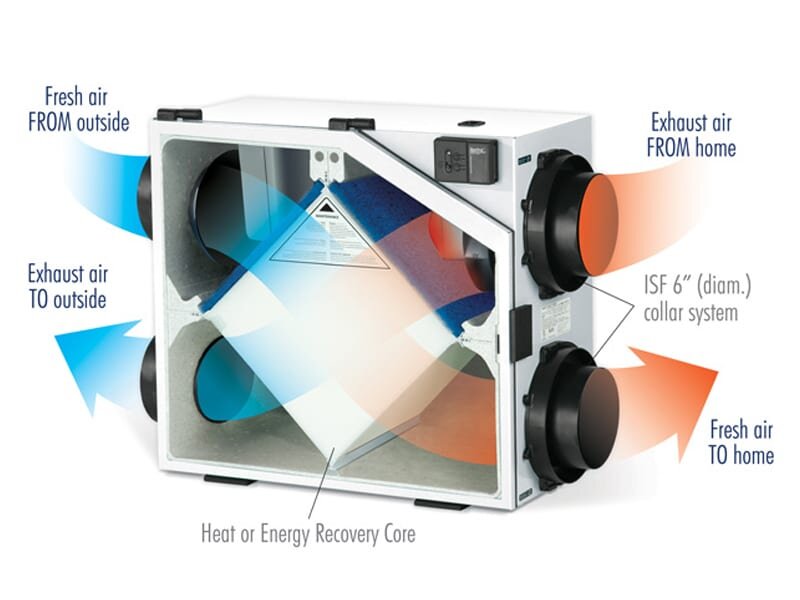Air Seal Without Sending People to the Hospital
Ever heard a contractor say, “building’s need to breathe”? This usually comes from seasoned builders who have seen their fair share of rotted, deteriorating buildings.
Until about 50 years ago, buildings were not air tight. They had leaks and gaps all over the place that allowed “fresh air” to dry out any moisture that got into the walls, roof, and foundation. These leaks carried away all the mold-causing humidity and many of the toxins commonly found in homes (radon, carbon monoxide, particulate matter, VOC’s, etc).
Then, we realized that those leaks and gaps were not only carrying out the humidity and toxins, they were carrying out the heated or conditioned air! All that expensive, comfortable air. That’s why heating or cooling older buildings is so expensive.
So we started to seal buildings up tight. Putting air barriers at the walls, ceiling, and foundation.
Great for heating and cooling. Not so great for toxins, allergens, and humidity.
Occupants started to get very sick. Entire households being taken the hospital for respiratory illness. And, unfortunately, those sealed buildings started to get a bad rap.
Since then, building professionals have come up with a solution: PROPER VENTILATION!
So we seal up the building during construction AND add supply and exhaust ventilation. Ideally in the form of an ERV or HRV.
HRV’s (Heat Recovery Ventilator) supply filtered fresh air and exhaust stale, potentially toxic air. Incredibly, they also exchange heat between the outgoing and incoming air so your expensive heating or cooling isn’t wasted.
ERV’s (Energy Recovery Ventilator) do the same thing but they also exchange humidity so the air is even more comfortable.
Older houses that “breathe” through gaps and leaks, usually have indoor air that is worse than the outdoor air. No wonder, the “fresh” air passes through building materials, dust, and frequently, critter feces.
In newer, properly sealed and ventilated homes, the indoor air is healthier than the outdoor air.
INDOOR AIR IS HEALTHIER THAN OUTDOOR!
People with allergies, asthma, other respiratory issues, and even eczema, find that symptoms disappear in these homes. People also report getting better nights sleep, feeling more awake during daylight hours, and finding it easier to concentrate.
I recently also got the question, “what about during nice weather when you want to open windows”? Well, you may let in some allergens and, if you live in a city, pollution. But once you close the windows, your ventilation will kick on again and start to filter all that new air.
It’s so unfortunate that sealed homes got a bad reputation because they really are the way of the future. If you’re going to spend all that money on a new home or renovation, do it right. Air seal & ventilate.

